GORDON S. BROWN








To Olivia
Table of Contents
Preface
 ,he story of the Normans in Southern Italy and Sicily is much better known in Europe than in the United States. Most American readers have at least some familiarity with one Norman conquest, namely that by William of Normandy, who invaded England in 1066 to assert his claim to the throne. But the same readers are often surprised to learn that other Normans were successfully engaged in Italy, even before William's great enterprise, in wresting a kingdom of their own from the Byzantine Empire, the local princes, and the Arab rulers of Sicily.
,he story of the Normans in Southern Italy and Sicily is much better known in Europe than in the United States. Most American readers have at least some familiarity with one Norman conquest, namely that by William of Normandy, who invaded England in 1066 to assert his claim to the throne. But the same readers are often surprised to learn that other Normans were successfully engaged in Italy, even before William's great enterprise, in wresting a kingdom of their own from the Byzantine Empire, the local princes, and the Arab rulers of Sicily.
Yet this other conquest by the warrior knights from Normandy, descendants of the Vikings, had great importance in its time, and even long afterwards. No more at the beginning than a disorganized movement by young, ambitious, and land hungry knights, it turned into a historical creation. The southern Italian state founded by the Norman knights soon became one of the richest, most cosmopolitan and most powerful states of the late medieval period, one which contributed greatly to the opening up of the Mediterranean and the crusading movement. In the great struggle between pope and emperor of the period, Norman power and wealth at first offered the reforming popes their most muscular support, but later provided emperors with the wealth to confront the papacy. Even though the Normans ruled as kings for only a hundred years, the state they had founded lasted for another six hundred and fifty, unfortunately growing weaker and more backward with time.
This book is not an effort to tell the whole story of the Normans in Italy. It attempts, instead, to follow the main threads of the early period: how these interlopers from northern Europe managed to find their historical role in the Italian provinces of the Byzantine Empire, how they succeeded in replacing the Byzantine and local rulers, and then how they drove the Arab rulers out of Sicily. In focusing on the protracted period of the conquest, that is, the second half of the eleventh century, this book sets out in particular an account of the achievements of that remarkable set of brothers, the sons of Tancred of Hauteville, who spearheaded the effort.
The story of the Normans' historical role in the south came alive for me as I discovered lingering traces of their presence in a variety of Mediterranean countries that I had the pleasure to live in or visit during an earlier career. In trying to bring that story alive to an American audience, I have drawn on my previous diplomatic experience to try to explain the political acts of the eleventh century protagonists in ways that make sense to a modern reader. While this approach has undoubtedly shortchanged the elements of faith and superstition that were such an important part of medieval thought and action, I would contend that the Normans were, above all, a practical and pragmatic people driven by a kind of self-interest that is fully understandable in today's times.
I can claim no major research breakthroughs in this presentation. The all but definitive research and analysis performed many years ago by the noted French scholars Chalandon and Gay has served as the basis of my analysis- as indeed it has for modern scholars much more deeply grounded in the period than I. I am indebted to their work, as I am to the more contemporary books of Lord Norwich, whose witty and colorful rendition of Norman and Byzantine history cannot but influence other writers-vide the use of the phrase "this other conquest" above. I can only regret that the meticulous scholarship of G.A. Loud's book was available in print only after I had finished most of the research for this work. Finally, I am grateful to Professors Barbara Kreutz and Joanna Drell for encouraging me, an outsider to the medievalist profession, to try my hand at making this fascinating history more accessible.
Introduction
 hey did not, at first, intend to conquer. The young Norman knights who went south to Italy in the first half of the eleventh century did so simply to earn a living, to find adventure, or even to escape the confines of their own society and justice. Daring, ambitious, and hardy, those young men embodied the nascent energy of a northern Europe that was poised for growth and progress. Over the coming centuries, that energy would bring about great economic and commercial expansion, inspire a great surge of cathedral building, spawn the reconquista in Spain and the Crusades, and lead to the flowering of the high medieval period.
hey did not, at first, intend to conquer. The young Norman knights who went south to Italy in the first half of the eleventh century did so simply to earn a living, to find adventure, or even to escape the confines of their own society and justice. Daring, ambitious, and hardy, those young men embodied the nascent energy of a northern Europe that was poised for growth and progress. Over the coming centuries, that energy would bring about great economic and commercial expansion, inspire a great surge of cathedral building, spawn the reconquista in Spain and the Crusades, and lead to the flowering of the high medieval period.
Those Norman adventurers found in southern Italy not only possibilities for employment, but opportunities for maneuver and personal advancement. The region, even more than usual for Europe at the time, lacked strong central authority, harbored competition between the major powers, and was the scene of continual conflict among the minor local states. It was a situation full of possibilities for observant and opportunistic adventurers.
The Norman knights, trained in warfare and accustomed to interpreting the law imaginatively to their own ends, were ready to take advantage. In Italy, they soon learned that they might do better than simply make their living. The lucky ones might well earn, or steal (the two were often synonymous), that greatest prize: a fiefdom for themselves. The military prowess of these knights, their audacity, persistence and lack of scruples fueled their initial successes. A few leaders soon became significant actors in the local military balance. Soon, constantly reinforced by new recruits from their homeland, they began to be brokers of power as well. They had become a permanent part of the political and military landscape of the region, but their efforts remained individual and uncoordinated.
Gradually, the Normans gained their own lands and vigorously, even ruthlessly, expanded their power. Inevitably, they also increased the number of their enemies and the threats against them. Their own political leadership evolved in response, and eventually coalesced around two poles: a group at Aversa, north of Naples, and a group centered at Melfi, in northern Apulia. Just before mid-century, two remarkable young leaders came to Italy, where their family connections eventually allowed them to become leaders of the two groups: Richard Dregnot at Aversa, and Robert Guiscard in Apulia. Robert was one of the many sons of Tancred of Hauteville, and his brothers had already opened the way for him by their election as counts of Apulia. He and Richard would lead the Normans into a new phase in their occupation of the area.

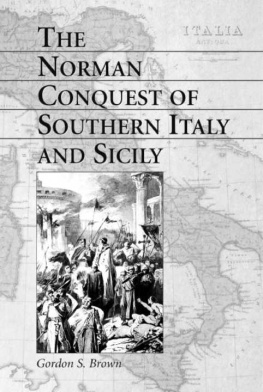
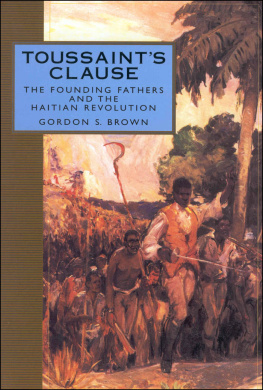


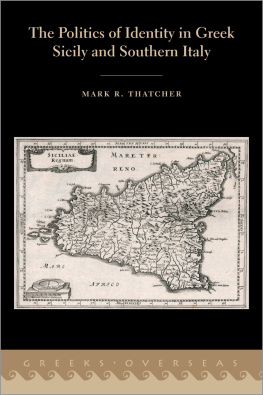

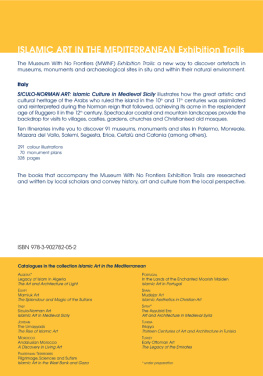
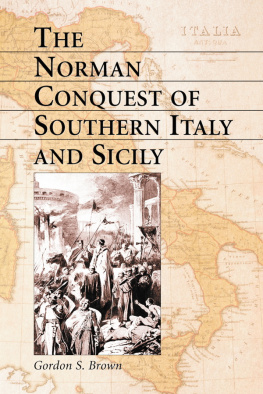






 ,he story of the Normans in Southern Italy and Sicily is much better known in Europe than in the United States. Most American readers have at least some familiarity with one Norman conquest, namely that by William of Normandy, who invaded England in 1066 to assert his claim to the throne. But the same readers are often surprised to learn that other Normans were successfully engaged in Italy, even before William's great enterprise, in wresting a kingdom of their own from the Byzantine Empire, the local princes, and the Arab rulers of Sicily.
,he story of the Normans in Southern Italy and Sicily is much better known in Europe than in the United States. Most American readers have at least some familiarity with one Norman conquest, namely that by William of Normandy, who invaded England in 1066 to assert his claim to the throne. But the same readers are often surprised to learn that other Normans were successfully engaged in Italy, even before William's great enterprise, in wresting a kingdom of their own from the Byzantine Empire, the local princes, and the Arab rulers of Sicily. hey did not, at first, intend to conquer. The young Norman knights who went south to Italy in the first half of the eleventh century did so simply to earn a living, to find adventure, or even to escape the confines of their own society and justice. Daring, ambitious, and hardy, those young men embodied the nascent energy of a northern Europe that was poised for growth and progress. Over the coming centuries, that energy would bring about great economic and commercial expansion, inspire a great surge of cathedral building, spawn the reconquista in Spain and the Crusades, and lead to the flowering of the high medieval period.
hey did not, at first, intend to conquer. The young Norman knights who went south to Italy in the first half of the eleventh century did so simply to earn a living, to find adventure, or even to escape the confines of their own society and justice. Daring, ambitious, and hardy, those young men embodied the nascent energy of a northern Europe that was poised for growth and progress. Over the coming centuries, that energy would bring about great economic and commercial expansion, inspire a great surge of cathedral building, spawn the reconquista in Spain and the Crusades, and lead to the flowering of the high medieval period.